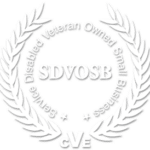The Cybersecurity Maturity Model Certification (CMMC) is poised to become a critical requirement for contractors working with the Department of Defense (DoD). While often associated with IT and data-centric organizations, the construction industry is not exempt from its impact. As cyber threats continue to evolve in both sophistication and frequency, the U.S. government has prioritized the protection of sensitive information—including Controlled Unclassified Information (CUI) and Federal Contract Information (FCI). Construction firms engaged in federal projects must now consider cybersecurity not just as a technical necessity but as a business imperative.
What is CMMC?
CMMC is a tiered certification framework developed by the DoD to ensure that contractors have adequate cybersecurity practices in place. Its primary objective is to safeguard federal information against unauthorized access and cyber threats throughout the defense industrial base (DIB). Unlike past frameworks that relied on self-attestation, CMMC requires third-party certification to validate compliance.
The model consists of three cumulative levels of maturity:
- Level 1 – Foundational: Focuses on basic cyber hygiene. This level includes 17 practices aimed at protecting FCI and ensuring that companies have minimal safeguards in place, such as antivirus usage, password protection, and basic access controls.
- Level 2 – Advanced: Aligns with the 110 security controls defined in NIST SP 800-171, which is a widely recognized cybersecurity framework. This level is intended to protect CUI and requires a significant uplift in cybersecurity maturity, including incident response plans, configuration management, and access control mechanisms.
- Level 3 – Expert: Applies to companies managing highly sensitive CUI or supporting critical DoD operations. This level adds additional practices designed to combat advanced persistent threats (APTs) and requires a robust, continuously monitored security posture.
How CMMC Affects the Construction Industry
Cybersecurity may traditionally be associated with software development or information technology, but construction firms—particularly those participating in government-funded infrastructure, military bases, or classified facilities—are equally at risk and increasingly in scope for CMMC compliance.
1. Prime Contractors and Subcontractors
Whether working directly with the DoD or as part of a subcontracted team, firms involved in federal projects must adhere to CMMC requirements. Even if they do not manage classified data, handling project schedules, procurement data, or communication platforms containing FCI places them under compliance obligations.
2. Design and Engineering Firms
Architectural, structural, civil, and systems engineering firms frequently engage with sensitive schematics, project documentation, and specifications. When such data pertains to federal or military projects, it is often considered CUI and thus must be protected under the appropriate CMMC level.
3. Project Management and Supply Chain
Construction project managers are tasked with overseeing entire project lifecycles, often collaborating with a wide array of vendors and subcontractors. Vulnerabilities anywhere in the supply chain can pose significant security risks. As a result, firms must ensure that their extended networks—materials suppliers, software providers, logistics companies—are also operating in compliance.
Preparing for CMMC Compliance
To avoid disruptions in contract eligibility and maintain competitiveness in the federal sector, construction companies should proactively prepare for CMMC certification. Recommended steps include:
- Conduct a Cybersecurity Gap Analysis: Evaluate your current cybersecurity posture against the CMMC requirements for the level you will need. This assessment identifies deficiencies in existing protocols, technology, and documentation.
- Develop and Implement a Compliance Roadmap: Create a structured action plan for implementing the required practices and processes. This includes network segmentation, multi-factor authentication, data encryption, and documented policies.
- Educate and Train Employees: Human error remains one of the most significant security risks. Training staff on phishing awareness, password management, and data handling procedures helps minimize internal vulnerabilities.
- Engage a Third-Party Assessor: Certification cannot be self-administered. Firms must work with a CMMC Third-Party Assessment Organization (C3PAO) or Registered Provider Organization (RPO) to undergo an independent review and obtain official certification.
The Future of CMMC in the Construction Sector
As federal agencies place greater emphasis on cybersecurity, CMMC is expected to become a standard contractual requirement, not just in DoD projects, but potentially across all government contracts. This means construction companies involved in military housing, federal courthouses, and national infrastructure developments must embed cybersecurity into their operational frameworks.
Companies that delay preparing for CMMC risk losing eligibility for high-value government projects, while those who act now position themselves as trusted partners capable of meeting modern security demands. The shift toward cybersecurity maturity is not a temporary compliance hurdle—it is a long-term strategic shift for businesses operating in the government construction space.
CMMC is no longer optional for DoD contractors. For the construction industry, this represents a pivotal moment to adapt, invest, and evolve. Meeting CMMC standards not only secures federal work but also protects the company’s reputation, data integrity, and long-term viability in an increasingly security-conscious market.



